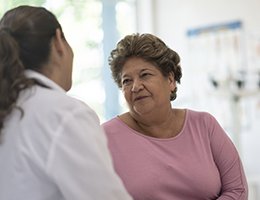
Do you believe in second chances? Often in life, second chances provide an opportunity to turn back the clock and change your course to make things right again.
Prediabetes is a second chance in the making. It happens when a person's blood sugar levels are higher than normal but not yet high enough to be type 2 diabetes.
About 1 in 3 U.S. adults has prediabetes, which often progresses to full-blown type 2 diabetes. But studies show that prediabetes can actually be reversed—if it is found and treated early enough. Getting tested for prediabetes may give you that second chance.
Blood sugar rising
Prediabetes and diabetes are different degrees of the same problem: elevated blood sugar. Sugar in the bloodstream (glucose) gets too high when the body doesn't have enough of, or can't properly use, a hormone called insulin. Insulin helps transport glucose from the blood to the body's cells, where it's used as fuel.
One of the first signs that insulin isn't working properly is slightly elevated blood glucose. For years, this condition was known as impaired glucose tolerance or impaired fasting glucose. To mark the significance of the condition and make it easier to recognize and define, doctors began calling it prediabetes.
According to the National Institute of Diabetes and Digestive and Kidney Diseases, prediabetes often turns into diabetes within 10 years.
Progressive damage
Prediabetes increases the risk of heart attack and stroke. If the condition progresses to diabetes, your risk increases for each of the following:
- Kidney damage.
- Nerve damage.
- Hearing loss.
- Blindness.
- Limb amputations.
Who's at risk?
Some people who have prediabetes may have dark skin patches or skin tags under their arms, on their neck or on their back. But don't rely on these signs to tip you off to prediabetes. Prediabetes typically doesn't cause any symptoms, so it's important to be screened if you are at risk. According to the Centers for Disease Control and Prevention and the American Diabetes Association (ADA), risk factors for diabetes include:
- Being age 45 or older.
- Being overweight.
- Having high blood pressure.
- Having a parent, brother or sister with diabetes.
- Having a history of gestational diabetes.
- Having had a baby that weighed more than 9 pounds.
- Belonging to an ethnic group such as African American, American Indian, Asian American, Hispanic American or Pacific Islander.
- Having polycystic ovary syndrome.
If you're 45 or older or have at least one other risk factor, you should start being screened.
Screening tests
Prediabetes can be detected with one of three simple tests that measure the body's ability to process glucose.
Tests that require overnight fasting:
- The fasting plasma glucose test measures blood sugar first thing in the morning.
- The oral glucose tolerance test measures blood sugar first thing in the morning and again two hours after having a glucose-rich drink.
A test that does not require fasting:
- The A1C test offers an average reading of your blood sugar over the past two to three months.
If your results on one of these tests fall between normal and diabetic, you have prediabetes. You will need to be tested for diabetes every year or two, according to the ADA.
If your results are normal but you have risk factors for diabetes, you should be retested for prediabetes at least every three years.
Seize your second chance
Once it's detected, prediabetes can actually be stopped, the National Diabetes Prevention Program study showed. The study included more than 3,000 people with prediabetes. People who lost 5% to 7% of their body weight by cutting back on calories and fat and exercising (mostly walking) 30 minutes a day, five days a week, reduced their diabetes risk by 58%.
These changes may even bring glucose levels back to normal—eliminating prediabetes and reversing the progression to type 2 diabetes.
A limited-time opportunity
Prediabetes can be turned around. But you won't know you have it unless you get screened.
If you're at risk, at any age, ask your doctor about getting screened for prediabetes. Small efforts now could save you from a devastating disease later.
Reviewed 11/9/2023
Sources
- American Diabetes Association. "Diagnosis." https://diabetes.org/diabetes/a1c/diagnosis.
- Centers for Disease Control and Prevention. "Prediabetes – Your Chance to Prevent Type 2 Diabetes." https://www.cdc.gov/diabetes/basics/prediabetes.html .
- Centers for Disease Control and Prevention. "Prevent Diabetes Complications." https://www.cdc.gov/diabetes/managing/problems.html.
- National Institute of Diabetes and Digestive and Kidney Diseases. "Diabetes Prevention Program (DPP)." https://www.niddk.nih.gov/about-niddk/research-areas/diabetes/diabetes-prevention-program-dpp.
- National Institute of Diabetes and Digestive and Kidney Diseases. "Insulin Resistance & Prediabetes." https://www.niddk.nih.gov/health-information/diabetes/overview/what-is-diabetes/prediabetes-insulin-resistance.
- National Library of Medicine MedlinePlus. "Prediabetes." https://medlineplus.gov/prediabetes.html#.